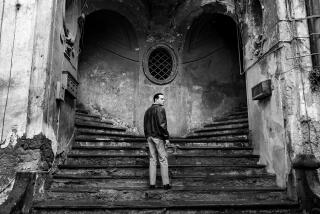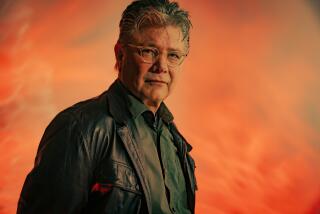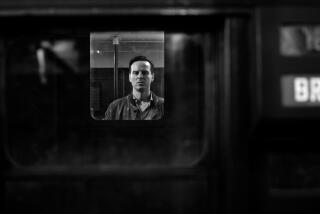S. Dillon Ripley II; Transformed Smithsonian, Started Magazine
- Share via
WASHINGTON — S. Dillon Ripley II, an explorer and ornithologist who led the Smithsonian Institution through an era of sweeping change and expansion as its secretary from 1964 until 1984, has died.
Ripley died of pneumonia Monday at George Washington University Hospital. He was 87.
He was a major influence in the transformation of the Smithsonian’s image from that of a bastion of science and culture for the sober and serious-minded into a bright, lively and freewheeling center of education, amusement and entertainment.
He put a carousel on the Mall in front of the Smithsonian Castle, and he started the American Folklife Festival, an increasingly popular celebration of American ethnic and regional traditions, music and art held in the summer.
Ripley started Smithsonian magazine in 1970, a money-raising venture that, within a dozen years, was turning a handsome profit. It now reaches nearly 8 million readers.
“These museums are living places,” he repeatedly said. “Children of all ages are here. They come to learn. They must learn because it’s fun. They shouldn’t be footsore and weary.”
Educated at both Yale and Harvard universities, Ripley had a patrician demeanor and a style of operating that infuriated critics, who contended that he sometimes gave short shrift to established procedures and regulations.
But he was anything but patrician in his belief about whom the museum was intended to serve.
In the spring and summer of 1968, when members of the Poor People’s Campaign camped out near the Lincoln Memorial after Martin Luther King Jr.’s assassination and the Washington riots, Ripley reminded an apprehensive Smithsonian staff that “these people are American citizens, and they must be made to feel welcome in our museums.” When thousands of antiwar demonstrators converged on the Mall during the Vietnam War era, he directed Smithsonian guards to treat them with dignity and respect.
Sidney Dillon Ripley II was born in New York on Sept. 20, 1913. His father was a Manhattan stockbroker, and his great-grandfather was Sidney Dillon, the first board chairman of Union Pacific Railroad.
Ripley studied history at Yale, and for a time he considered becoming a lawyer or an actor. Instead, he decided to “abandon all thoughts of a prosperous and worthy future and to devote myself to birds, the subject I was overpoweringly interested in.”
He received a doctorate in zoology from Harvard and was assistant curator of birds at the Smithsonian for three months while working on his doctoral thesis. In 1942, he joined the Office of Strategic Services, the forerunner of the CIA, which sent him to Asia.
Most of his World War II duty was in India, Burma and Thailand, with occasional trips to China, where his future wife, Mary Moncrieffe Livingston, served as an OSS officer. They were married in 1949, and she later accompanied him on ornithological expeditions all over the world. She died in 1996.
After the war, Ripley joined the faculty at Yale, where he became a professor of zoology, and, in 1959, director of the university’s Peabody Museum. He established a reputation as an eminent zoologist and wrote a dozen books on birds, wildlife and museums. His magnum opus was the 10-volume Handbook of the Birds of India and Pakistan, which he wrote with Selim Ali.
He had come to view the Smithsonian as “a sleeping beauty,” a reservoir of unrealized potential, and when the search committee invited him to become the new secretary, he thought it over for six weeks before accepting.
He arrived in Washington only a few months after the assassination of President John F. Kennedy. The nation was undergoing a resurgence of interest in culture, and Ripley was adroit at winning support for his museums in that atmosphere.
He found in President Lyndon B. Johnson a willing ally. “Johnson had been a schoolteacher. He was devoted to American history, and that is one of the things the Smithsonian is about,” Ripley said.
His detractors sometimes criticized him for what they saw as compromising the Smithsonian’s intellectual integrity by turning the Mall into an entertainment center with the likes of the folk life festival, kite-flying contests and jazz concerts.
After his retirement in 1984, he was named secretary emeritus. The next year he received the Presidential Medal of Freedom.
Survivors include three daughters and 11 grandchildren.
More to Read
The biggest entertainment stories
Get our big stories about Hollywood, film, television, music, arts, culture and more right in your inbox as soon as they publish.
You may occasionally receive promotional content from the Los Angeles Times.










